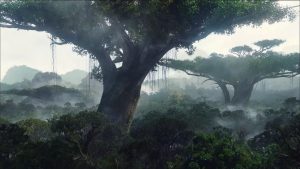
As mentioned in Oh No, There Goes Tokyo, a few natural and factitious reasons have made the apocalypse of cities became a heated topic in post-war Japanese films, TV series, comics and aminations. Located at the plate’s boundaries, Japan suffers from frequent destructive earthquakes and tsunamis. These natural disasters have the deadly power to threaten the whole city even in the present. In 2011, the earthquake and tsunami severely affected the whole Tohoku area and caused the Fukushima Daiichi nuclear disaster. Moreover, the atomic bombing of Hiroshima and Nagasaki raised nuclear panic among the world, as the nuclear attack easily destroy the two cities in seconds. Facing this kind of disasters, people may not have the military or technical power to defend. Giant troll such as Godzilla and Mothra represent for those irresistible catastrophes. Spectators could feel the trill when the monsters are destroying the cities where they live in or familiar with; defeating the villain, on the other hand, could bring positive emotions to spectators. It should be noticed that among this kind of monster’s theme movies, directors focus on the severe presenting damages of cities through audio-visual techniques and extolling the bravery and intelligence of people who defeat the monster together. A large number of scenes would be used to portray the story of human heroes and heroines. However, on the contrary, the introduction of the villains is almost in a blank. Who are they? Why do they destroy the cities? The monsters are treated as simple threaten such as natural disasters, which are harmful because of pure power.
Lately, films and animations producers start to focus on the relationships between human and giant monsters. Although the hostile relationship between these two camps still exists, people start to think about the reasons why monsters would conduct invasions and damage humans’ habitats. In the Korean movie the Host (2006), the monster was created by the US military institutions’ chemical wastes poured into the Han river. The genetic mutant monster constructs a metaphor to present Korea’s delicate relationship with America in the international political environment. Attack on Titan (2009) creates a world where mankind is hunted by titans and have to live in a shelter protected by a giant city wall. However, as the story gradually reveals, spectators will find that Titan initially created by humans themselves to forbid residents who live in the shelter to contact with outsides world. Titan, the evil creatures symbolize fears of the unknown world. Moreover, in Avatar (2009), humans themselves become the “monsters” who invade other species’ homeland and pillage their resources. In the film, the scene of humans’ air force destroying alien aborigines’ home tree is just the same thing as Godzilla destroying Tokyo but being shown from a different perspective. The deeper and further thoughts of monsters represent the changes of peoples’ acknowledges about the relationships between nature and humankind, the considerations of society and international interaction, the explorations of future and unknown world and even the philosophical thoughts of human beings ourselves. Instead of merely protecting the homeland and being afraid of natural disasters or nuclear wars, people manage to get rid of the grids and look further.
DONG YUCHEN 3035448859
Reading Response 2